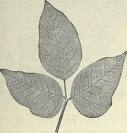| Home > 5. Sodium Bicarbonate Injection > 5.4 Sodium Bicarbonate and Crack |
 Previous Next Previous Next  |
|
|
|
Sodium content of injection 50 mL, 8.4% = 1150 mg = 50 mEq; each 6 mg of NaHCO3.
 Flower Oil Flower OilThese methods work well for specific materials and soils but lack the kind of general purpose effectiveness that vapor degreasing provides. And, there is usually a waste disposal consideration with these wet processes.[1]
The flower is greenish yellow (rarely pink), curly like a starfish, and yields a highly fragrant essential oil. This didn't last, and Alma weakened to a storm on the 21st and a depression the following day, mostly due to upper-level shear. [2]
The mixture is boiled until a solid substance forms. The solid is removed from the liquid, dried, and then broken into the rocks) and sold as crack cocaine. [3]
 For Smoking For SmokingCoca leaves are not smoked because the temperature needed to burn them destroys the cocaine alkaloid before it can be inhaled. [15]
It might also be a factor that it less physically destructive to smoke all the time than to be constantly snorting so snorters self-regulate more. [16]
While most coca paste is converted into powder cocaine, the paste itself is smoked in South American countries that produce cocaine. During the early 1980s, several cities in the United States also experienced sporadic episodes of coca paste smoking. [17]
 Shared Needles and HIV Shared Needles and HIVThe injecting drug user is at risk for transmitting or acquiring HIV infection/AIDS if needles or other injection equipment are shared. [41]
In addition to impurities delivered directly into the blood stream, if needles or other injection materials are shared, users are at greater risk for transmitting or acquiring HIV infection, AIDS or Hepatitis B and C. [42]
Those who inject the drug are at high risk for AIDS and hepatitis when they share needles. Allergic reactions to cocaine or other substances mixed in with the drug may also occur. [43]
 Effect on Babies Effect on BabiesOther victims were the users, the neighborhoods, “crack babies” (those born addicted) and child abuse of children born into crack using parents. For the better part of the 1980s cocaine and crack were drugs of epidemic proportions.[45]
The first "crack babies " were born. [46] Studies show babies born to crack cocaine addicts are more unresponsive and indifferent than other newborns. [47]
 Crack Possession Crack PossessionBefore trial, Taylor pled guilty to conspiracy and two counts of possession. The other defendants went to trial before a jury. [48]
Simple possession of other controlled substances is a misdemeanor with a maximum term of imprisonment of 1 year. Illegal distribution of small quantities of crack has very harsh penalties—harsher than those for cocaine distribution.[49]
Regional and national law enforcement agencies each have their own legislative, administrative, and social measures to address illicit drug production, possession, and distribution. International organizations such as the UN and Interpol unify these national efforts to address the global issues of drug demand and supply.[50]
 Cocaine CocaineYes, crack cocaine is illegal. Schedule II drugs, which include PCP and methamphetamine, have a high potential for abuse.[56]
The average purity of cocaine in Europe at consumer level is high, varied in 2005 from 1 to 90 %, with most countries reporting purities of 25?55 % (Table PPP-7 ). Data available for 2001?06 show an overall decrease in the purity of cocaine in most reporting countries. [57]
This increased dependence leads to sensitivity to crack cocaine sensitivity, which may explain some deaths occurring after apparently low doses of cocaine. [58]
 Increased Users Increased UsersThe annual number of new cocaine users has generally increased over time. In 1975 there were 30,000 new users.[103]
Frequent use leads to an increased tolerance to the drug so higher and higher doses are required to achieve the desired euphoric feeling. More detailed information about the symptoms , causes, and treatments of Crack addiction is available below. [104]
Short-term physiological effects of cocaine include constricted blood vessels, dilated pupils, and increased heart rate, blood pressure, and body temperature. Longer-term effects of cocaine use include tolerance and addiction, irritability and mood disorders, restlessness, paranoia, and auditory hallucinations. [105]
 Euphoria And Psychological Effects Euphoria And Psychological EffectsOnce the period of euphoria is over, feelings of dysphoria (uneasiness) and anxiety take over. These feelings drive users to take additional hits at fairly regular intervals (for instance, one line every half hour). [116]
Cocaine induces euphoria, confidence and a sense of increased energy in the user; these psychological effects are accompanied by increased heart rate, dilation of the pupils, fever, tremors and sweating. Cocaine is used by smoking, intravenous, intranasal or oral administration, and excreted in the urine primarily as benzoylecgonine in a short time. [117]
|
|
|
|

